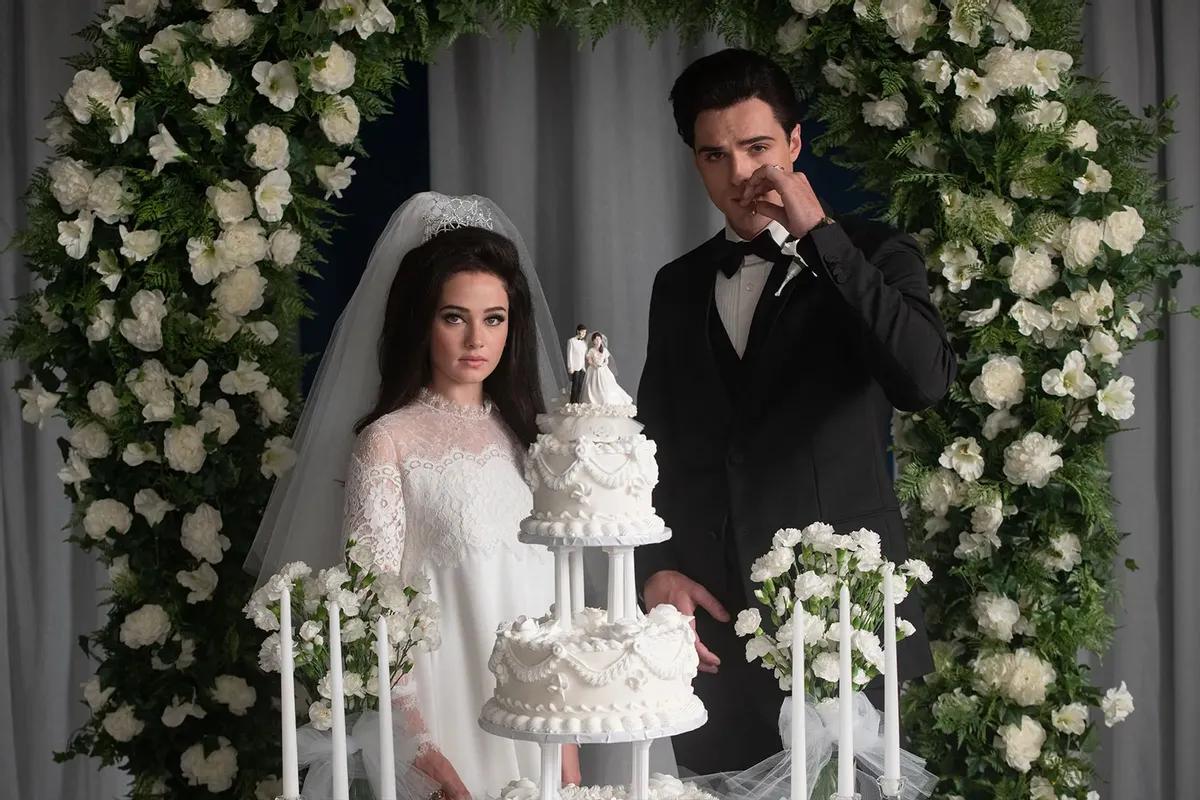After the release of “Elvis” in 2022, audiences were left with a deeper understanding of rock n’ roll; after watching “Priscilla” in 2023, audiences were left with a deeper understanding of manipulative control.
Directed by Sofia Coppola, A24’s latest film “Priscilla” takes the cameras off Elvis and pivots them onto his ex-wife, revealing their story as a less-glamorized tale of an older man controlling a vulnerable young woman. The movie follows Priscilla from age 14 into adulthood, from the moment she meets Elvis to the moment she leaves him.
The film begins when young Priscilla is invited to Elvis’s party and, at the reluctance of her parents, attends. He calls her “little one” and then kisses her, stringing her along in the hope that she could develop a true connection with the artist.
The dialogue reeks of manipulation, with Priscilla telling her parents not to “ruin her life” and that “he trusts her,” when they tell her she cannot attend another one of his parties. Elvis uses his power dynamic as a popular artist and older male to keep Priscilla wrapped around his finger, telling her parents that “she’s much more mature than her age,” – gross.
As Priscilla falls further under his spell, she asks more questions about him and listens in admiration while he never actually takes the time to learn about her.
He leaves for tour and she waits for years, holding onto hope that they will be back together once he returns. He doesn’t call or reach out and her family tells her to release her love for him. Upon an abrupt call from Elvis two years into his absence, she visits him and Priscilla is introduced to drugs. He takes her to Vegas, treats her as a trophy by his side, and welcomes her into a rock n’ roll party scene.
He grooms her and keeps her waiting for him, ultimately locking Priscilla into his life. After moving in together, she sat at home and read magazine pieces about the rumors of his supposed relationships and engagements with other women, just to be lied to upon any questioning. A good majority of the film takes place in the bedroom, showing that their only intimate moments take place due to the influence of sex and drugs.
“Priscilla” dives into the themes of addiction, manipulation, abuse and victimhood. Sofia Coppola tells a painful tale of one-sided love driven by the hunger of hope.
To avoid any further spoilers, I will talk more about the stylistic direction implemented throughout the film – because it was truly genius. From the very beginning of the film, Priscilla wears lighter colors while Elvis is constantly dressed in darker clothing. The metaphorical implications behind this ultimately paint Priscilla in an ethereal light, and pit Elvis as a force to be wary of.
Coppola included cliched shots of kissing in front of fireworks, telling an emotional plotline from Priscilla’s perspective of how she came to fall in love with him. Calm music plays in the background of exciting moments as she accustoms more comfortably to his lifestyle. When on LSD, the shots burst with neon light and overlays of clips shift over each other to imitate hallucinations.
Colors emulate Priscilla’s emotions in any given moment, light is used to resemble evils and sadness, and clothes are meticulously used to track the decades in which each phase of their relationship takes place.
Coppola tends to pop back into the film scene occasionally, and always without disappointment. The film ends abruptly when Priscilla decides to finally leave Elvis, sending the message that this film was designed to tell the story of their toxic relationship. I think the timeline of this movie’s release was extremely important, portraying the other half of the previously glamorized “Elvis” film. Coppola proved that we cannot tell one story without highlighting the other side, which “Priscilla” does an effective job at executing.




